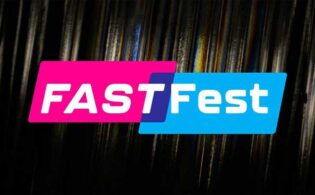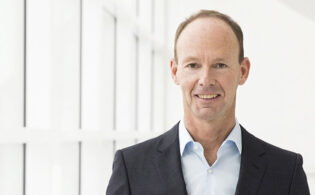Jens Richter, CEO of commercial and international at Fremantle, outlined how the company is tapping into its vast catalog to deliver a suite of single-IP and multi-genre services at the FAST Festival.
Richter’s keynote conversation with World Screen’s Anna Carugati kicked off day two of the virtual FAST Festival. You can watch it here.
The session began with Richter discussing why Fremantle made an early move into FAST, extending the BUZZR brand for classic game shows, first rolled out in U.S. syndication, into FAST in 2019. “Year one was a good experience. In year two, we saw quite some traffic, and then in year three, we saw traffic and also revenues.”
At the same time, the company started to notice significant gains in its social media business across outlets like Facebook and YouTube. “We like this space of direct-to-consumer. With the success of BUZZR, we kicked off a whole project to dig deep. What’s in our library? What rights are available? What are the right shows for FAST? What kind of rights is it? In the early days, it wasn’t even clear what kind of rights we were talking about. Is it linear TV? Is it a special digital right? What do we need? We went out and came up with a plan of what other FAST channels we wanted to launch in the U.S.”
The number one consideration when mulling if a show is suitable for FAST is recognition. “FAST is a relatively new space. You want to put channels out where the brands are easily recognizable by your audience. Number two is, FAST means you have to fill a linear schedule. You need at least 200 hours of programming. It’s a game of the right shows, volume, scheduling and refresh rates. You need to constantly put something up, and then you have to think about engaging with your audience.”
The FAST focus at Fremantle has been built around owned-and-operated channels, both single-IP and genre-based, rolled out to multiple platforms.
On how FAST has helped inject new life into beloved brands, Richter said: “For us, it’s another window. Essentially, we are talking about linear, commercial, free-TV rights. It’s like the same set of rights you could license to a cable channel. What you’re doing here is you create your own cable channel, but you deliver it over the top to platforms. And it’s an advertising-supported model, so it’s the same set of rights. When you think about the licensing of your show, it’s another window. And it could come in non-exclusive. It could be exclusive. It could be for a longer period of time. It could be for a shorter period of time. A show that is on a FAST eventually could go back to cable. That’s the beauty here. It extends the possibilities for people like us.”
Richter then addressed the different models available for working with FAST operators. “Licensing is the easiest. The next one is you set up an owned-and-operated channel, and you provide it to the platforms. And then the revenue-share model, where the platform monetizes the inventory, and you share with the platform the advertising revenues. The next level up could be a revenue-share model with the backfill rights. You, the channel provider, have the opportunity to sell idle, unsold inventory. Another model would be an inventory-share model. You have the advertising inventory around your show, and you share that inventory, the minutes of advertising spots, with the platform, and each side can sell individually. Then you can retain and keep the revenues you make from selling the advertising.”
As such, FAST has emerged as both a good revenue source and a crucial method for helping to maintain and elevate brand awareness. “It helps the life of your brand. The other thing that’s exciting in this model is data. In our conventional licensing model, we hand over our programs to the platforms and the broadcasters, and they take over from there. When we own and operate our channels in the FAST space, especially in a revenue-share model or inventory-share, we have data. We can see how the shows perform. We can play with refresh rates; we can play with scheduling; we can play with stunts; we can play with communication. We have a direct impact on how our show performs.”
Richter then discussed the outlook in the U.S., the most mature FAST market. “Over the last three or four years, we’ve seen tremendous growth rates in FAST. What’s interesting in the U.S. is the number of channels. That growth rate was higher than the growth rate of the advertising revenues. More money gets spread across a lot more channels and a lot more inventory. That’s a little bit of the challenge in the market. A platform that maybe three or four years ago was eager to take on any kind of channels might be more selective now. They’re looking for strong brands. They’re looking for highly professional brands, premium brands, with great viewer experiences, and they might filter out some channels that underperform. Some platforms carry 300, 400, 500 channels. That becomes a crowded space. That said, we’re working on some exciting new channels for the U.S. There’s not an absolute limit. What’s happening now is a little bit of a filtering. Strong new offerings will come to the market, and some will go out.”
As for the projections for the international market, Richter said: “In Europe or Australia or other parts of the world, local free-to-air commercial broadcasters that also have a strong AVOD platform are now building out that AVOD platform to carry FAST channels. We’re going to have quite a big selection of local players. It’s going to be a different market and a different game.”
On plans for further FAST channels at Fremantle, Richter said: “We’re working on some exciting stuff in the talent show space, like American Idol, Got Talent, The X Factor. We have quite a big library of heritage drama and comedy, especially in the U.K. And then with all our Fremantle sister companies, we are looking to single territories: Germany, Italy, Australia. What are the local shows that could have a real impact in that local market?”






